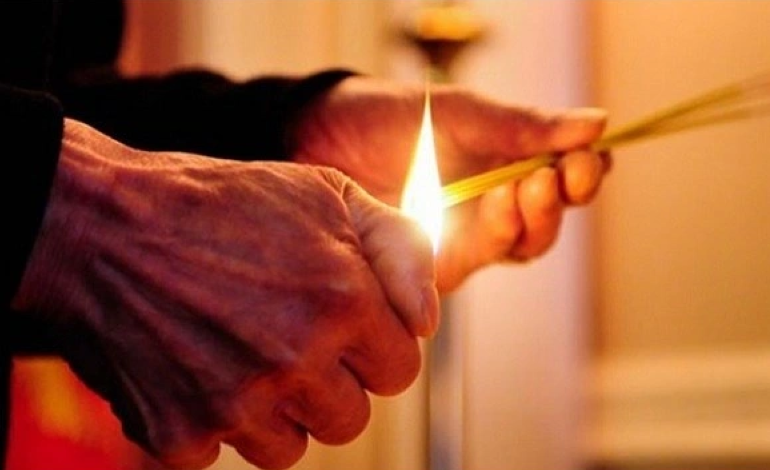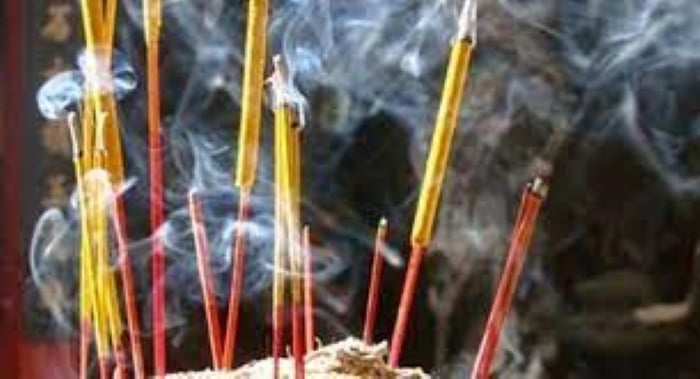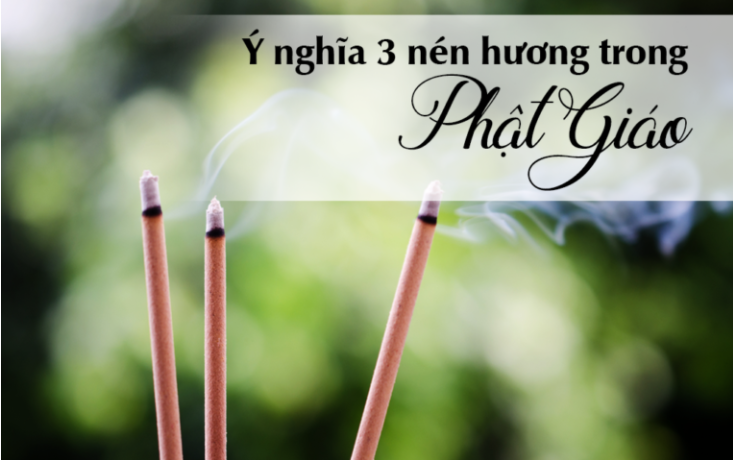Let’s explore the beauty of the incense-burning ritual below:
Where does incense come from?
According to folklore, incense originated from India about 5000 – 6000 years ago. India is a country with a developed Buddhist tradition and the birthplace of the Buddha, who went through various events in his life to attain enlightenment. During the time of the Tang Dynasty in China, a monk returned from India with incense. Subsequently, incense gradually became a popular material widely used in China during the Ming Dynasty.

For Vietnamese people, incense does not symbolize superstition, but rather is associated with a beautiful belief. Perhaps it is because the natural fragrance and warmth of incense lead people to believe that it belongs to the divine deities and serves as a means to connect with them. As a result, people burn incense every day on special occasions such as holidays and festivals to worship the divine deities and ancestral spirits, including the Earth God.
Burning incense is an act of reverence done in a sacred and respectful manner. Vietnamese people always uphold the tradition of burning incense on important occasions such as death anniversaries and Lunar New Year. The subtle and pleasant fragrance of incense has become an integral part of the Vietnamese people’s consciousness for generations.
The significance of the incense-burning ritual
Human beings go through ordinary days in their lives. On days such as full moon days, the first day of the lunar month, or during festivals, the fragrance of incense signals the beginning of significant milestones. The fragrance of burning incense reminds descendants to express their heartfelt respect and remembrance for their grandparents, ancestors, and divine deities.
Burning incense is a cultural beauty, a long-standing tradition. Vietnamese people, who have a tradition of “remembering the source when drinking water,” always keep in mind their roots. The significance of the incense-burning ritual is derived from this belief. Burning incense is not performed on a daily basis throughout the year, but only on specific dates according to tradition.
For Buddhists, incense is also a medium to connect with the Buddha and heavenly beings, a way to express their heartfelt devotion. The Buddhist scriptures state:
“With sincere devotion
Offering fragrant smoke
Floating in all ten directions
Offering to the Triple Gem”
The smoke of incense permeates the space, bringing tranquility and clarity to the soul, freeing individuals from mundane illusions and negative habits, and directing their hearts towards goodness and tranquility.

How to burn incense properly
The incense-burning ritual is particularly intricate in terms of culture and spirituality. Vietnamese people always consider and learn about the Feng Shui aspect of burning incense.
When should Vietnamese people burn incense?
The incense-burning ritual has become a habit of Vietnamese people and is often performed on special occasions such as holidays, festivals, full moon days, the first day of the lunar month, or death anniversaries. These are moments when the yin and yang energies are strongly connected. It is also the appropriate time for you to burn incense and express your sincere feelings.
The appropriate order to burn incense
According to Vietnamese cultural and spiritual beliefs, there are usually many altars and designated locations where people frequently burn incense, such as altars for ancestors, the God of Wealth, the Kitchen God, and Buddhist altars.
Since there are many altars, the proper order of the incense-burning ritual also needs to be considered. Specifically:
- Mother Guanyin Altar / Buddha Altar
- Ancestor Altar
- Earth God and God of Wealth Altar
- Kitchen God Altar
- Altar for the recently deceased
- Altar for wandering souls
- Number of incense sticks to burn
Incense sticks should be burned in odd numbers like 1, 3, 5, 7… because odd numbers represent positive aspects, bringing positive energy and good luck. Even numbers like 2, 4, 6, 8… represent negative aspects, carrying heavy negative energy. The most commonly burned incense is sandalwood incense.
– Burning 1 incense stick: The number 1 is used to pray for safety, luck, and happiness. “Bình an hương” is the name given to burning 1 incense stick, often used when people pray to the deities in their families.
– Burning 3 incense sticks: It is believed that people should burn incense sticks on days such as holidays, festivals, full moon days, or the first day of the lunar month.

Three incense sticks can represent various meanings such as:
- Heaven – Earth – Human (representing the divine, earthly, and human realms)
- Buddha – Dharma – Sangha (representing the Three Jewels: Buddha, Dharma, and Sangha)
- Desire realm – Form realm – Formless realm (representing the Three Realms)
- Past – Present – Future (representing the Three Times)
Most of these meanings serve as reminders for individuals to calm their minds, direct their hearts toward the Buddha, and express their devotion through prayer.
– Burning 5 incense sticks: Five incense sticks symbolize the Five Elements associated with the destiny of each person: Metal, Wood, Water, Fire, and Earth. People often burn five incense sticks when engaging in important activities and need the witness of the Five Directions, Heaven, and Earth for a successful outcome.
– Burning 7 incense sticks: Burning seven incense sticks represents the seven divine deities who govern the three realms. It is done to seek support in warding off evil spirits and solving problems. The incense-burning ritual always acts as a strong shield, providing trust and hope during the most challenging times.
– Burning 9 incense sticks: Burning nine incense sticks, also known as “Cửu Liên Hoàn Hương,” is done to invite the Jade Emperor and the deities in the Ten Departments to provide assistance. This is done during critical situations when there is a sense of urgency and no other solution can be found.
Considerations for the incense-burning ritual
In order for our prayers and intentions to have the most effective and spiritual impact, we need to consider the following when burning incense.

Things to do when burning incense
- Insert incense sticks straight and do not let them tilt, symbolizing steadfastness of our hearts.
- Avoid letting the wind extinguish the incense before it burns out.
- Do not let the burning incense touch other incense sticks and start a fire.
- Do not remove the inserted incense sticks; only burn new ones.
- When burning incense, do it with sincerity and devotion, without being casual or superficial. Recognize that the incense-burning ritual is an important religious activity that requires trust.
Things to avoid when burning incense
- Do not burn an even number of incense sticks, as it is considered inauspicious.
- Avoid speaking inappropriately or not dressing seriously when burning incense, as it shows a lack of respect.
- Do not burn incense sticks in a number that does not have a specific meaning.
- Avoid using low-quality incense sticks, such as those with chemical additives or uncertain origins.



































